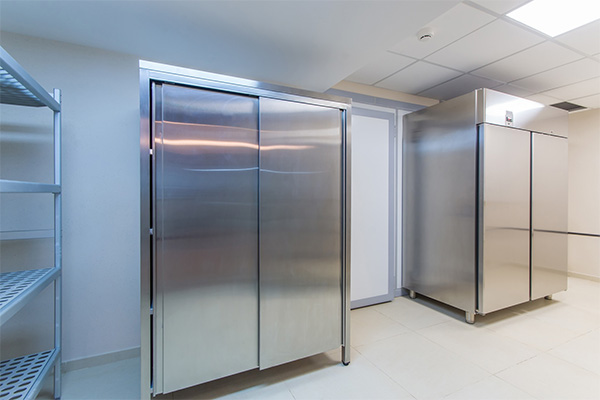
When setting up or renovating a restaurant, selecting the right equipment is essential to the success of your operation. Among the most crucial pieces is the commercial refrigerator, which keeps perishables at the proper temperature and protects the investment in your food inventory. Below, you’ll find a comprehensive guide to understanding different types, evaluating space requirements, and considering key features like efficiency and design.
Understanding the Different Types of Commercial Refrigerators
Commercial refrigeration comes in various forms to suit different needs within the restaurant environment. Reach-in refrigerators are popular for their ease of access and organization, ideal for high-traffic kitchens. Meanwhile, walk-in units offer larger storage capacities and are perfect for bulk storage or full-scale catering operations. Under-counter refrigerators provide additional space-saving and can be integrated seamlessly into the kitchen line for easy access to ingredients.
Specialized options exist as well, including display refrigerators for front-of-house use, merchandising fresh produce, drinks, or desserts. Bar refrigerators are designed for storing beers, wines, and other drinks at optimal serving temperatures. Prep tables with built-in refrigeration enhance efficiency by keeping ingredients chilled and within arm’s reach during meal preparation.
Ensuring your investment serves your needs requires a clear understanding of your menu, kitchen workflow, and customer volume within the foodservice industry. As an example, a commercial refrigerator that is easily accessible and spacious might be crucial for a high-volume restaurant’s foodservice operation. Smaller establishments could benefit from the discreet footprint of under-counter models to reduce energy consumption.
Evaluating the Space and Size Requirements for Your Restaurant Kitchen
The real estate within a restaurant kitchen is both valuable and limited. Before purchasing a commercial refrigerator, it’s essential to measure the available space to ensure that the unit will fit without disrupting the flow of the kitchen. Account for clearances needed for doors to open, as well as adequate space behind and around the unit for air circulation and maintenance activities.
Size requirements extend beyond physical dimensions. It’s important to assess the storage capacity needed based on menu complexity, ingredient variety, and the frequency of deliveries. A larger refrigerator might offer more storage, but if it’s not fully utilized, it can lead to higher energy costs and wasted kitchen space.
Considering Efficiency and Temperature Control Features in Commercial Refrigerators
Efficiency is a keystone in selecting a commercial refrigerator, as it significantly affects ongoing operational costs. Modern refrigerators offer advanced features that promote energy conservation, such as LED lighting, efficient compressors, and improved insulation materials. Identifying units with Energy Star certification can lead to substantial savings on utility bills and reduce environmental impact.
Temperature control is also crucial for ensuring food safety. High-quality commercial refrigerators maintain consistent temperatures, even in the face of frequent door openings or in hot kitchen environments. Some models provide digital temperature displays and alarms that alert staff if the temperature deviates from a set range, helping to safeguard against food spoilage.
Smart refrigeration is becoming increasingly prevalent in the restaurant industry, offering remote monitoring of temperature and energy use. These systems can provide valuable data for streamlining operations, predicting maintenance needs, and reducing the risk of product loss from unexpected equipment failures.
Analyzing the Impact of Refrigerator Design on Workflow and Maintenance
The design of a commercial refrigerator can have a profound impact on kitchen workflow. Ergonomic features such as easy-to-reach controls, self-closing doors, and comfortable handle designs can significantly reduce staff fatigue and improve efficiency during busy service hours. When evaluating options, consider how the refrigerator’s design will fit within the choreography of a fast-paced kitchen.
From a maintenance perspective, look for refrigerators with components that are easy to clean and replace. Features such as removable gaskets, smooth and easily cleanable surfaces, and accessible condenser coils facilitate regular cleaning and maintenance, which are essential for hygiene and the longevity of the unit.
Some refrigerators are designed with a bottom-mounted compressor, which not only elevates the main storage area for easier access but also provides cooler and less greasy air for the compressor to operate, potentially extending the equipment’s lifespan. However, such designs may require more frequent cleaning due to dust and debris accumulation.
Overall, choosing the right commercial refrigerator for your restaurant is a complex decision that requires consideration of various factors. From understanding different types and functionalities to analyzing size, efficiency, design, and cost, each element plays a crucial role in finding the perfect fit for your operation. A well-chosen refrigerator will facilitate a smoother workflow, guarantee food safety, and provide long-term savings, enhancing the overall success of your business.
Keep an eye for more latest news & updates on Buzz Telecast!



